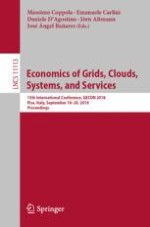2019 | OriginalPaper | Chapter
Snooping Around a Fence: A Lesson from the Education Sector in a Software Service Ecosystem
Authors : Djamshid Sultanov, Kibae Kim, Jörn Altmann
Published in: Economics of Grids, Clouds, Systems, and Services
Publisher: Springer International Publishing
Activate our intelligent search to find suitable subject content or patents.
Select sections of text to find matching patents with Artificial Intelligence. powered by
Select sections of text to find additional relevant content using AI-assisted search. powered by
